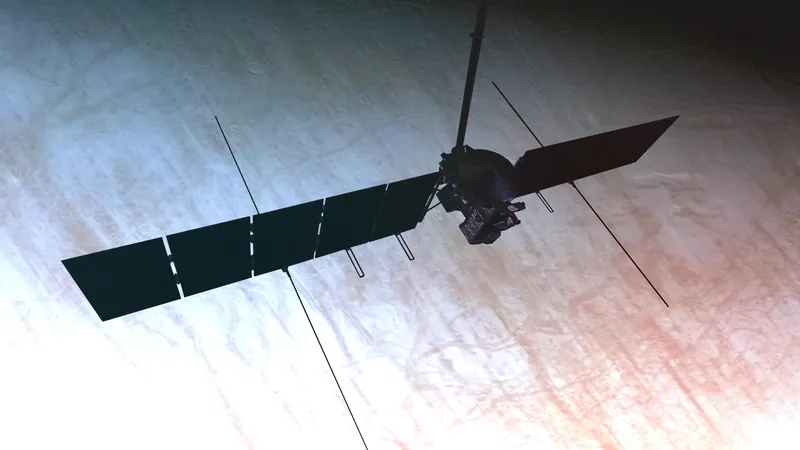
NASA’s Europa Clipper: A Thrilling Journey to the Secrets of Jupiter’s Moon Begins!
2024-11-25
Author: Wei
NASA’s Europa Clipper is already over 13 million miles (20 million kilometers) away from Earth, and the spacecraft is flawlessly executing its mission on a thrilling voyage toward Jupiter’s moon, Europa. Having launched on October 14, it is set to reach Mars in just three months, where it will perform a gravity assist, maximizing its velocity for the long journey ahead.
This groundbreaking spacecraft, built on an unprecedented scale for a planetary mission, is traveling a staggering 1.8 billion miles (2.9 billion kilometers) to reach Jupiter by 2030. Once it arrives, Europa Clipper will embark on a series of 49 flybys over a decade, using an advanced suite of instruments to investigate whether the icy moon harbors conditions compatible with life.
As the mission unfolds, the engineering data from the spacecraft has shown that everything is operating smoothly. Early on, the massive solar arrays were deployed, stretching the length of a basketball court, and the magnetometer boom extended a full 28 feet (8.5 meters) into space. These instruments are crucial; the magnetometer will later verify the existence of an ocean beneath Europa’s icy surface, providing insights into its depth and salinity.
In an exciting step forward, the spacecraft has also successfully deployed multiple antennas for its radar instrument. These four high-frequency antennas, each measuring approximately 57.7 feet (17.6 meters) long, will help gather significant data about the moon's characteristics and potential for life.
Jordan Evans, the project manager at NASA's Jet Propulsion Laboratory, shared his enthusiasm: “It’s an exciting time on the spacecraft, getting these key deployments done. We’re now delving into the data to understand the spacecraft's behavior more deeply.”
Between now and early next year, the remaining seven instruments will be powered on and off for health checks. Some instruments, like the visible imager and gas and dust mass spectrometers, will remain covered for about three years to protect them from the harsh solar environment during their time near the Sun.
After the instruments are checked, all eyes will turn to Mars. The planned encounter with the Red Planet on March 1, 2025, is an essential part of the trajectory plan that will help slow down the spacecraft for its rendezvous with Jupiter. During this flyby, mission teams will have the chance to test the spacecraft’s thermal imager by capturing spectacular colorful images of the Martian landscape and collecting data with the radar instrument.
Additionally, another crucial gravity assist will occur in December 2026, where the spacecraft will swoop past Earth, allowing scientists to calibrate its magnetometer by measuring our planet’s magnetic field.
The main objectives for the Europa Clipper mission are ambitious yet vital: determining the thickness of Europa's icy shell, understanding its interaction with the subsurface ocean, investigating its composition, and characterizing its unique geology. The findings could shed light on the conditions for life beyond Earth, propelling humanity's quest to find extraterrestrial existence.
This extraordinary mission is managed by Caltech, working closely with the Johns Hopkins Applied Physics Laboratory and several NASA centers. The collaboration combines expertise and innovation, paving the way for groundbreaking discoveries that could redefine our understanding of the cosmos.
Stay tuned to see how Europa Clipper unfolds its journey through space and unveils the mysteries of Europa—could this icy moon be hiding secrets of life? Only time will tell!


 Brasil (PT)
Brasil (PT)
 Canada (EN)
Canada (EN)
 Chile (ES)
Chile (ES)
 España (ES)
España (ES)
 France (FR)
France (FR)
 Hong Kong (EN)
Hong Kong (EN)
 Italia (IT)
Italia (IT)
 日本 (JA)
日本 (JA)
 Magyarország (HU)
Magyarország (HU)
 Norge (NO)
Norge (NO)
 Polska (PL)
Polska (PL)
 Schweiz (DE)
Schweiz (DE)
 Singapore (EN)
Singapore (EN)
 Sverige (SV)
Sverige (SV)
 Suomi (FI)
Suomi (FI)
 Türkiye (TR)
Türkiye (TR)